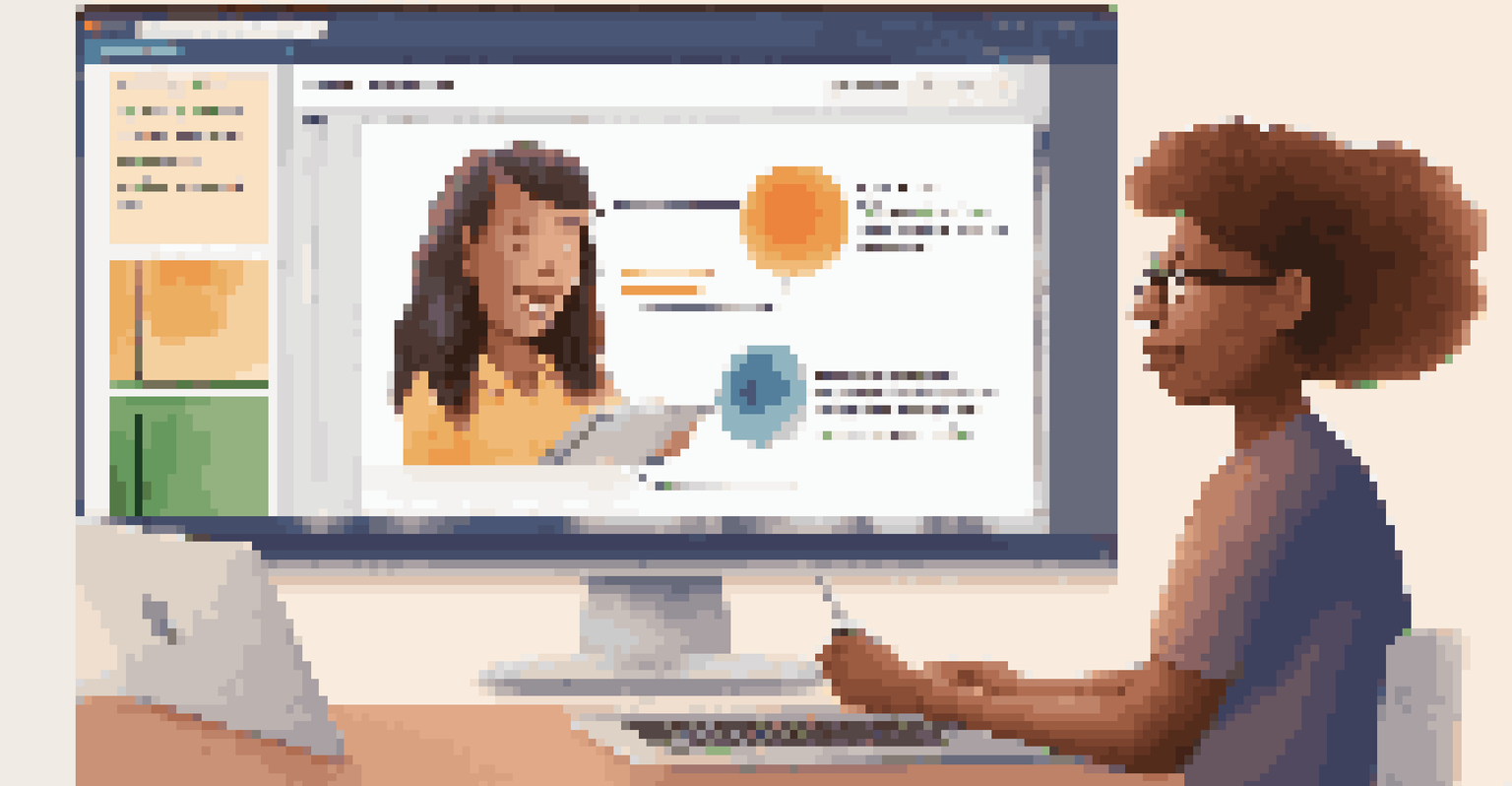The Role of Feedback Loops in Enhancing Digital Learning Culture

Understanding Feedback Loops in Learning
Feedback loops are essential mechanisms that provide information about performance and understanding. In the context of digital learning, they refer to the ongoing process where learners receive feedback on their progress. This information helps learners adjust their strategies and approaches, ultimately enhancing their educational experience.
Feedback is the breakfast of champions.
For example, an online course might include quizzes that give immediate feedback on answers. This allows students to recognize areas where they may need improvement, fostering a growth mindset. By understanding their strengths and weaknesses, learners can take charge of their educational journey.
Moreover, feedback loops don't just benefit learners; they also empower educators. Instructors can analyze feedback trends to refine their teaching methods and course materials, creating a more tailored learning environment. This reciprocal relationship is crucial for fostering a successful digital learning culture.
The Importance of Timely Feedback
Timeliness is key when it comes to feedback loops. Providing feedback promptly allows learners to make necessary adjustments while the material is still fresh in their minds. This immediate interaction can significantly enhance retention and understanding, leading to better overall performance.

Consider a scenario where a student submits an assignment and receives feedback within a few hours. They can quickly apply the suggestions to future assignments, reinforcing their learning. In contrast, delayed feedback can lead to confusion and disengagement, as students may struggle to connect the feedback to their earlier efforts.
Feedback Loops Enhance Learning
Feedback loops provide essential insights for learners, helping them adjust their strategies and improve their educational experience.
By prioritizing timely feedback, educators create an environment where students feel supported and encouraged. This proactive approach helps maintain student motivation and fosters a culture of continuous improvement.
Creating a Safe Space for Feedback
For feedback loops to be effective, learners must feel safe and supported in sharing their thoughts and questions. Establishing a trusting environment encourages open communication and honest reflection. When students feel comfortable, they are more likely to engage with the feedback provided.
We learn from failure, not from success!
Imagine a virtual classroom where students can express their concerns without fear of judgment. This atmosphere promotes collaboration and deeper learning, as peers can share insights and experiences. Educators play a vital role in nurturing this culture by modeling vulnerability and encouraging constructive dialogue.
Ultimately, a safe space for feedback not only enhances individual learning but also strengthens the community. When students feel valued and heard, they are more likely to contribute positively to the digital learning culture.
Utilizing Technology for Effective Feedback
Technology can significantly enhance feedback loops in digital learning environments. Online platforms offer tools for real-time feedback, allowing instructors to provide insights instantly. These tools can include chat features, comment sections, or even video feedback, making communication more dynamic.
Consider using learning management systems (LMS) that enable instructors to track student progress and provide personalized feedback. These platforms can generate reports that highlight common challenges, allowing educators to adjust their teaching strategies. This data-driven approach ensures that feedback is not only timely but also relevant to each learner's needs.
Timely Feedback Boosts Performance
Providing feedback promptly allows students to make necessary adjustments while the material is fresh, enhancing retention and understanding.
By leveraging technology effectively, educators can create a more interactive feedback loop that keeps learners engaged and motivated. This integration of tech tools into the learning process ultimately enhances the overall digital learning culture.
Encouraging Self-Assessment and Reflection
Self-assessment is a powerful component of feedback loops that encourages learners to take ownership of their education. By reflecting on their performance and understanding, students can identify areas for improvement and set personal goals. This practice fosters a sense of accountability and encourages lifelong learning.
For instance, after completing an assignment, students can use a checklist to evaluate their work against established criteria. This process not only helps them recognize their strengths but also highlights areas that may require further attention. By promoting self-reflection, educators empower students to become active participants in their learning journey.
Incorporating self-assessment into the feedback loop creates a culture of self-awareness and growth. As learners become more attuned to their progress, they can navigate their educational path with confidence.
Feedback Loops and Continuous Improvement
A culture of feedback loops in digital learning promotes continuous improvement for both students and educators. As feedback is shared and acted upon, it creates an iterative process that enhances learning experiences. This ongoing cycle encourages adaptation and refinement, leading to better outcomes.
For example, if a group of students consistently struggles with a particular concept, educators can adjust their teaching methods or provide additional resources. This responsiveness ensures that the learning environment evolves to meet the needs of all students. It demonstrates a commitment to quality education and fosters a spirit of collaboration.
Self-Assessment Promotes Growth
Encouraging self-assessment empowers learners to take ownership of their education, fostering accountability and lifelong learning.
Ultimately, embracing feedback loops as a means of continuous improvement cultivates a culture that values growth and development. This mindset is essential in today's fast-paced digital landscape, where adaptability is key to success.
The Future of Feedback Loops in Digital Learning
As digital learning continues to evolve, feedback loops will play an increasingly vital role in shaping education. Advances in technology will enable more personalized and responsive feedback, catering to the unique needs of each learner. This shift will further enhance the effectiveness of digital learning environments.
Consider the potential of artificial intelligence (AI) in providing tailored feedback based on individual learning patterns. Such innovations can create an even more dynamic feedback loop, allowing educators to focus on facilitating rather than merely delivering content. This future-oriented approach will ensure that learning remains engaging and relevant.

In summary, the future of feedback loops in digital learning is bright. By embracing these changes, educators can create an enriching learning culture that continuously adapts and improves, ultimately benefiting students and fostering a lifelong love for learning.